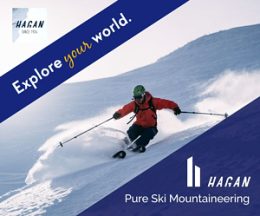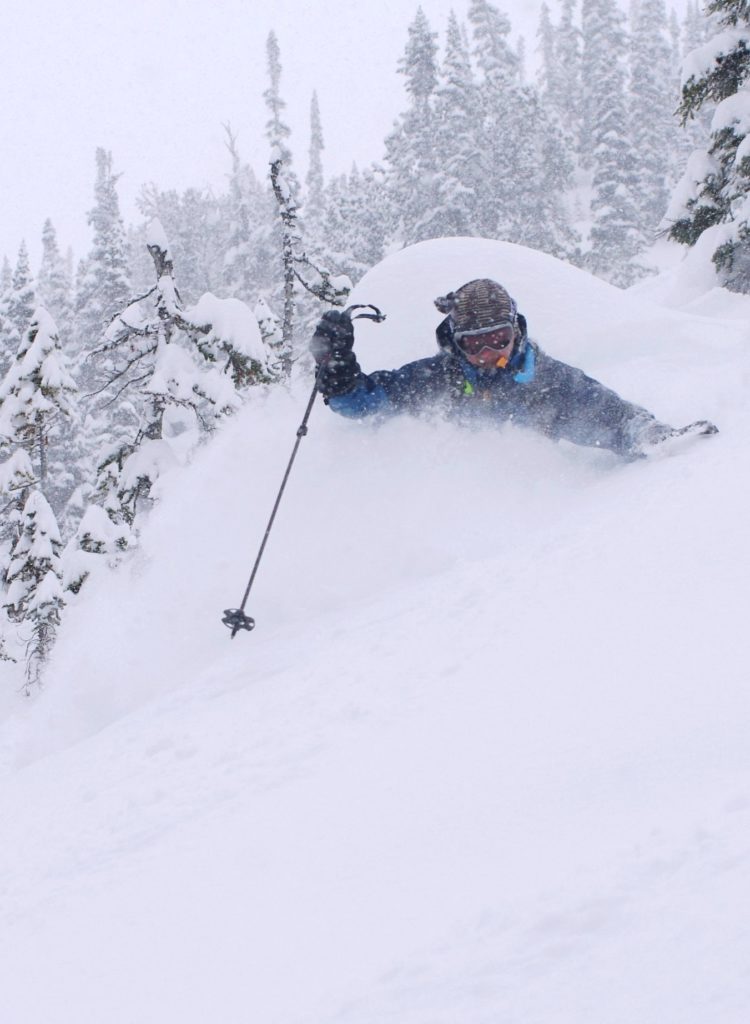The Avalanche Chaser
Backcountry skiers spend their time in the woods doing everything in their power to avoid avalanches. Steve Conger, however, has built a life out of chasing them. He got his start as a ski patroller, earned a graduate degree in snow science, started his own snow-science tool business, and became a highways avalanche forecaster for Utah’s Cottonwood Canyons and later for the Trans-Canada Highway. He served as editor of the Avalanche Review, was a board member for American Avalanche Association, and now works with the Canadian Avalanche Association Industry Training Program and is an avalanche consultant in Golden, B.C. He has followed the footsteps of industry legends like Ed Adams, Knox Williams, Bruce Jamieson, and others, and has dedicated his life to furthering the work they began. Powder Cloud caught up with him via phone about how he built a life—and a partnership with Tannis Dakin, who founded Sorcerer Lodge—out of snow sliding down mountains.
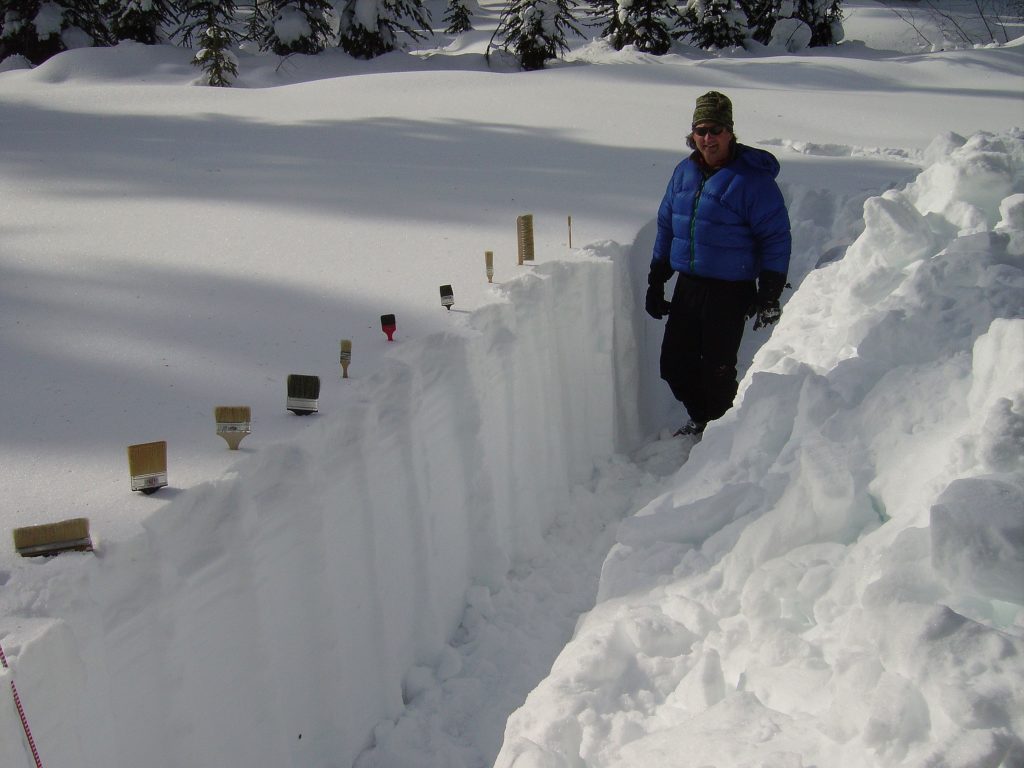
Powder Cloud: How did you first get interested in avalanche education?
Conger: I didn’t choose avalanches. Avalanches chose me. I really didn’t have much choice in not being in the snow—I was always drawn to it. I grew up in southwest Idaho with parents who supported being outside skiing and backpacking. They had started skiing up on Berthoud Pass when they were in university at Fort Collins. The first place I skied was Brundage; they took us there so we didn’t have to be embarrassed in front of our friends. My mom told me to stop crying and go at least halfway up on the rope tow. I went halfway up and came down in the powder, and that was all she wrote. Then my family got season passes, and we each had to pay for our part. I had to earn 45 dollars to go skiing.
PC: What was your first job?
Conger: My first nonagricultural job was working in a ski shop as soon as I got out of high school. The whole time I was at the College of Idaho I was mounting bindings. After three years, I dropped out and became a ski bum, which was hard because there was a lot of pressure to go to university. All four of my grandparents had university degrees, my dad was a vet, and my mom had a degree in chemistry, which was pretty amazing because she went to school in the 1950s. But I dropped out anyway and went to Utah, where I got a job on patrol at Park City, and later as a highway forecaster. Avalanches were the thing that interested me more than anything.
PC: Were your parents horrified?
Conger: My dad didn’t get too upset with me—he wanted to know why I was ski patrolling. I told him everyone works 50 weeks a year for a two-week vacation, and those vacation weeks are my entire life. He was very kind to me about it.
PC: You eventually went back to school…and grad school. What did you study?
Conger: In the 90s I went back to school at the University of Utah. I graduated with a degree in physical geography. I started out in engineering, but decided I was much more interested in natural hazards, meteorology, snow hydrology, and geographic information systems.
PC: What it was about avalanches that drew you in?
Conger: I can only describe it in wildland firefighting terms: The fire is there and there it’s not. There’s the forest and then there’s the black. That phenomenon was so interesting. There was so much uncertainty about the study of avalanches, and they were so prevalent in the world I was in. They were just something I really wanted to understand.
PC: You eventually founded your own company, called Snow Knowledge, an avalanche tool and consulting company.
Conger: We didn’t have any snow-study tools at that time, so I started to create stuff. I made the first crystal card, the first field book, and had a one-stop shop for thermometers and hand lenses.
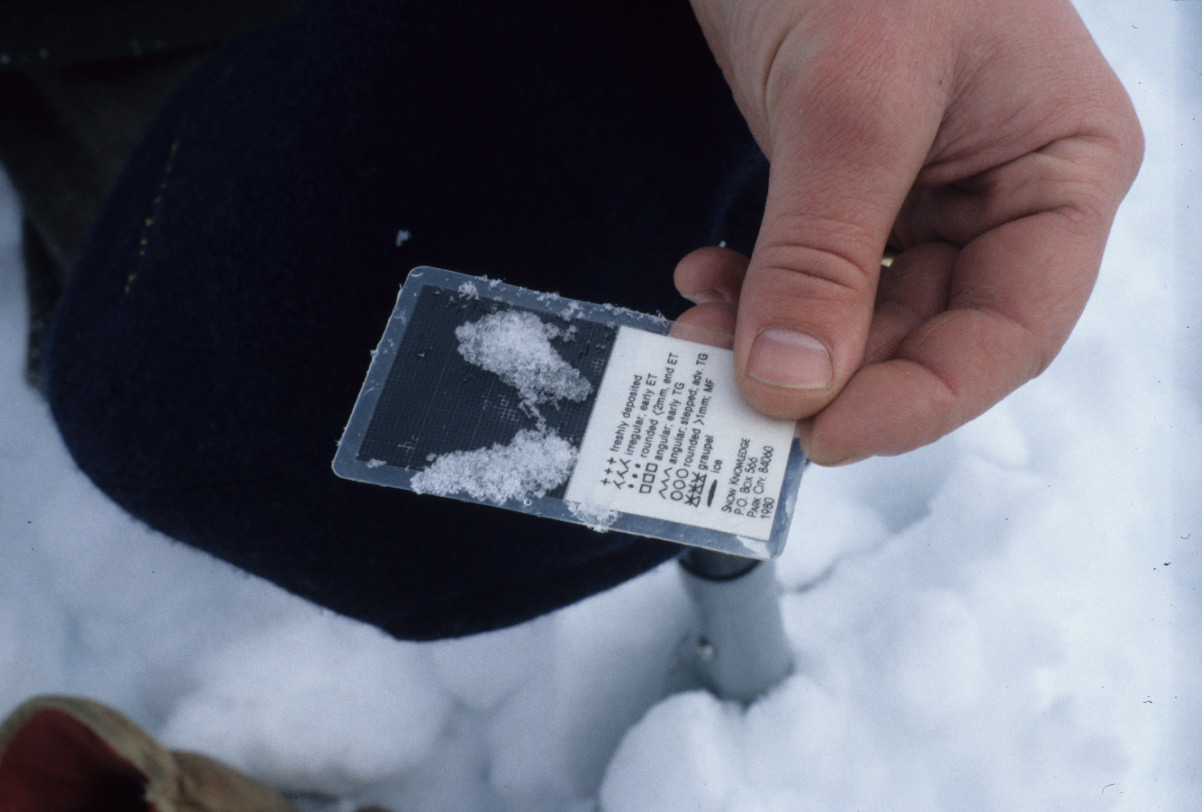
PC: What was the first avalanche you ever witnessed?
Conger: My first avalanche was during the first day of summer; we were coming down from a climb in the Sawtooths. It was a wet slop of old snow and new snow, and when it started moving I was rolling around in it with my ice axe, flailing at the end of its strap as it spilled out at the bottom of the slope. I said, “Wow I guess that’s what an avalanche is.”
PC: What was it like to study snow science when there wasn’t really any curriculum in place?
Conger: First, you needed to get a job in it, and then you needed to chase down anyone who would coach you. In the U.S. it was a transition time. The National Ski Patrol had some good people, and there were a few pretty good courses. Rod Newcomb’s AAI (American Avalanche Institute) was new, and that’s where everyone I knew went. I did a pro course with Rod. Other than that, there was the U.S. Forest Service’s National Avalanche School in Reno every two years, where all the top people in North America were brought in to instruct. A few people discovered the Canadian program and came up here to do the early courses.
PC: What drew you to Canada?
Conger: Avalanches. I was interested in being a researcher, and there was a spot for me up here in grad school. That’s how I wound up at UBC (University of British Columbia), and that led me to Rogers Pass, where our research site was. I went up to check it out and decided to stay within the first week.
PC: How did you meet your partner, Tannis Dakin, and get involved with the Sorcerer Lodge?
Conger: A long-time friend that I’d known from Idaho who ski patrolled at Pebble Creek knew both Tannis and me. She tried to set us up on a blind date and neither of us would have any of it. But then when I was doing research at Rogers Pass, she said, “I hear you’re doing fun stuff. Can I come look?” She watched me dig a profile and was impressed with the way I moved snow. That was how we got a first date. I think it took us about a week to figure out that we were meant for each other. We’d both been around the block enough times that we were like, “OK, wow.”
As far as the Sorcerer Lodge goes, Tannis just happened to own it. I’m completely ancillary there. She ran it and I just helped with stuff. I was a helicopter bellboy when she needed it, and have been running my own business teaching and consulting. The lodge was my day-off job.
PC: Did you get married at the lodge?
Conger: Neither one of us wants to be married. We’ve been together 14 years—why ruin a good thing?
PC: How did Tannis get her start?
Conger: She went to school at the University of Victoria and University of British Columbia, and she essentially studied outdoor business. It was a new concept. She worked for a cross-country ski operator out of Vancouver moved back to Golden to help her sister and Wayne Bingham start Golden Alpine Holidays. After Golden Alpine was done, she started Sorcerer because it had big north-facing glaciated terrain that Golden Alpine didn’t have. It was a big step at the time because everyone was in skinny tele skis and leather boots, and people weren’t interested in skiing that kind of terrain.
PC: What was the most exciting development in snow science during your career?
Conger: When we started moving from the science of snow into the human element. We all started thinking about it together. A lot of things changed during the winter of 1998/99. It was a watershed year when two highway avalanche technicians went to work one day and didn’t come home. That really set the industry back. We thought, “How can we be making mistakes as professionals?” And that’s when the CAA (Canadian Avalanche Association) reworked its Operations Level 2 to include Module 1, which was about human behavior and decision-making. It was all simultaneous.
PC: Based on your experience, what’s the best way to mitigate human factors and improve decision making in avalanche terrain?
Conger: We’ve employed the checklists and worksheets for quite a while to make sure we don’t miss things. I think the biggest focus is to have all the different perspectives presented in a fast way, even if that takes assigning someone the role of being the critical eye. Your job is to ask what-ifs. When it comes to human behavior in avalanche terrain, we make better decisions when we do it collectively. It gets down to learning how to talk.
I think the other important part of understanding human behavior is to recognize what our motivations are on an everyday basis. Those are our biases. A super good example of this is when I was up at Whistler, and the forecaster wanted to get appropriate terrain open for us so we could do a professional course. It was important to him to recognize in his morning meeting that “opening this terrain is my bias today, because I want to help these guys out.” This gave his crew the opportunity to consider the human behavior with a question like, “Are you sure?” It was integrated as one of the things that was going into his decision-making. Identifying what is influencing you is what recognizing human behavior is all about.
PC: Have you found that group size significantly affects communication?
Conger: If you draw a line between three people, it’s super easy to communicate. But bring in six and you have so many lines. Someone has to facilitate the communication. It’s hard when you have a group of six peers out there together.
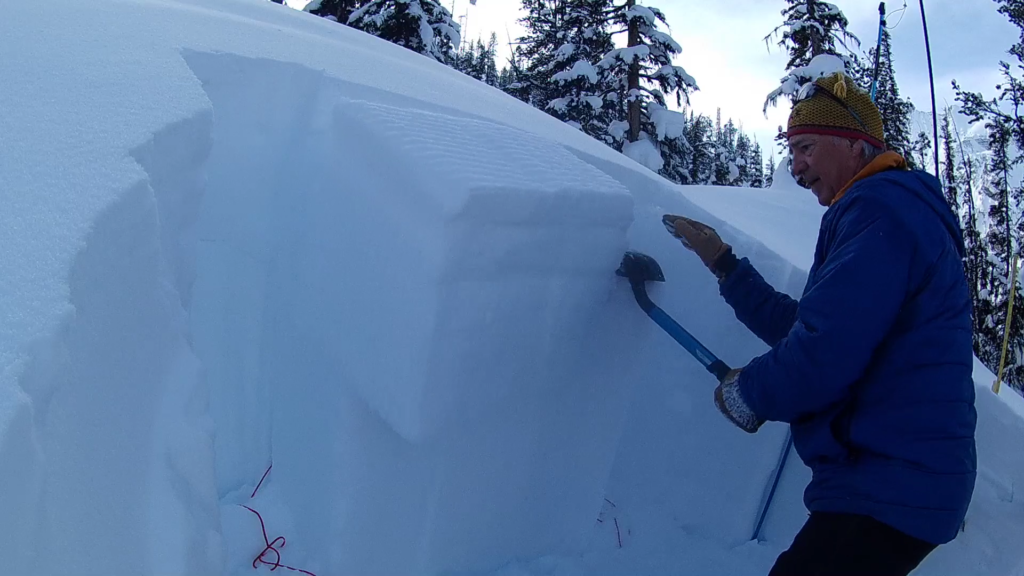
PC: How do you avoid the temptation to ski something you’re not sure about?
Conger: We take the time in the morning to decide based on everything we know. We decide where we’re not going, and we stick to that. It prevents talking yourself into it in the field. You have to have the discipline to stick to your morning decision.
After that ‘98-‘99 winter, one of our continuing professional development speakers that spring was a retired RAF pilot, actually an ace in multiple theaters. He talked us about his six rules for staying alive. The last two were: Always have an exit, and use it when you’re winning; and there is always tomorrow, so don’t be greedy.
PC: Do the guides usually agree about where to go and not go?
Conger: There’s usually a fair amount of consensus. You’ve already done your full cataloging of terrain you’re familiar with, everything you have available, what zones are good under what conditions, and what zones you have uncertainties in. You always have to take operational considerations into it, too. In terms of avalanches, usually people are pretty close to agreement. One thing might be more important than another thing, but at the end you’re at the same assessment level. When you aren’t being collaborative, it’s easier to be off. And when you’re doing it by yourself, it’s easier to make the wrong call.
PC: What advice do you have for young people who want to get into a career in backcountry skiing?
Conger: It’s hard to do it in this day and age, but don’t be afraid to do what you love. As George Carlin said, “Have a little fun. Soon enough you’ll be dead and burning in Hell with the rest of your family.” In terms of being in the avalanche business, it’s competitive these days, so having a technical education helps—whether that’s meteorology or some tech aspect you can fall back on. One of my early mentors said to figure out the job you want, and then camp on the doorstep. That was 30 years ago, and now you have to camp on the doorstep with a really good resume.
PC: When you make a career studying avalanches and working in avalanche terrain, how do you manage the emotional aspect of that?
Conger: You have to be OK with uncertainty, which means you have to be OK with risk and measuring risk in different ways, and recognizing where the reduceable risk is. Avalanches will happen. You will be close to avalanche tragedy, so early on you need to think about that and have a strategy to deal with it. It gets back to the human factors, and keeping yourself in the right state to make the right decisions.
PC: As a forecaster, do you ever blame yourself for avalanche accidents that happen?
Conger: There’s the old and new way of dealing with that. The old way was to shut it in and get drunk. The new way is to review and critique every decision you made so you can learn for the next time. One of the real advances we’ve made in all these types of work we do—whether it’s rescue or wildland firefighting or avalanche rescue—is recognizing how important the debrief and the follow-up is.
PC: After all these years, do you still feel like you have a lot to learn?
Conger: I think that’s one of the primary reasons I’m still doing this. It’s all still new. There’s never a time that you don’t go out and learn a new thing. Conditions and problems are different, and the seasons are different. We’re a young business—we only started in 1936. Avalanche science is not even 100 years old yet, and we’ve seen a lot of good new work. I’m starting to get pissed off that I’m just now starting to know enough to be good. Why couldn’t I have been this good a few years ago? And I expect to look back at now with the same perspective.
